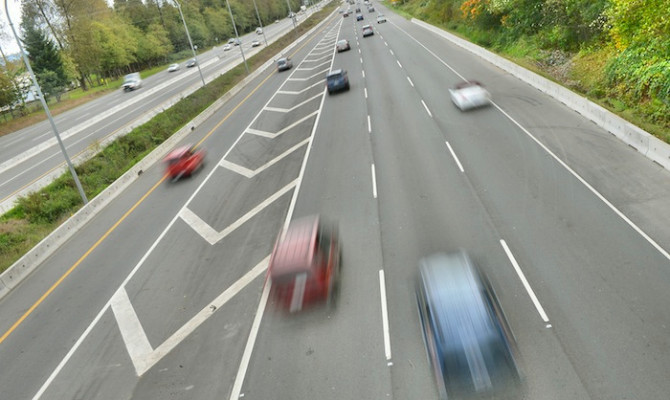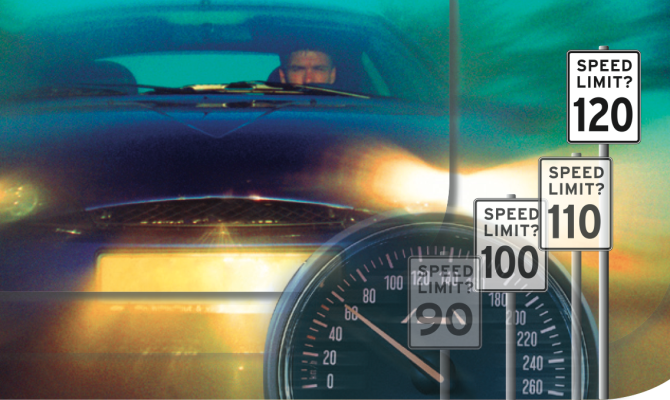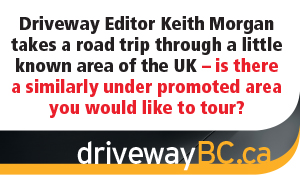More than half of those polled believe the province should not bring back photo radar…


A significant number of British Columbians clearly don’t buy the safety mantra that speed kills.
In fact, according to a new Insights West poll, conducted in partnership with Black Press, 37 per cent of residents (and 39 per cent of drivers) believe a higher speed limit should be posted on our major highways. Currently, 100 km/h is the maximum on most freeways, while 110 km/h is posted on the Coquihalla Highway and parts of the Okanagan connector.
“The fascinating issue on this question is the gender gap,” said Mario Canseco, Vice President, Public Affairs at Insights West. “While half of men in BC would like to see a higher speed limit, just one-in-four women concur with this view.”
However, it was surprising to see that more than half (55 per cent) believe the speed limits should be left alone. Another five percent want to see limits lowered.
It’s surprising if you read the newspaper letters pages and listen to the province’s radio talk shows, where the 100-klick limit is commonly referred to as unrealistic on today’s well-designed highways.
As a frequent driver of the network, I have to agree that a 110 limit on the suburban highways and 120 on the Coquihalla is reasonable. In my experience, it is not speed alone but excessive speed combined with over-driving the weather/road conditions that kills. It is also true to say that dramatic speed differentials of traffic is also a major contributor to road carnage. However, while that may be true on congested urban roads it is less so on the highway where few people are travelling below the posted limit and I don’t see another 10 km/h hike making for major mishaps.
Not surprisingly, the online survey of a representative provincial sample also shows that a majority of residents believe that photo radar should not be brought back. More than half of those polled (53 per cent) believe the province should not bring back photo radar, which was introduced in the 1990s as a measure to curb speeding, but was abandoned in 2001.
While almost half of residents aged 55 (48 per cent) would like to see photo radar coming back, support is decidedly lower among residents aged 18-to-34 (36 per cent) and 35-to-54 (31 per cent).
I supported photo radar initially because when used in high-collision locations, elsewhere in the world, it has a remarkable record for reducing death and injuries. It never operated that way in BC and soon became public enemy number one where it was perceived as merely a cash cow for greedy provincial government.
Residents were also asked about the quality of British Columbia’s road and infrastructure. More than seven-in-ten (74 per cent) rate it as “good” (68 per cent) or “very good” (6 per cent), while only 22 per cent deem it “bad” (19 per cent) or “very bad” (3 per cent).
Overall, only 16 per cent of British Columbians believe that the province’s roads are “not too safe” or “not safe at all” for motorists, while four-in-five (82 per cent) consider them “very safe” or “moderately safe.”
This is the first of four surveys Insights West will conduct during the next year in partnership with Black Press. We hope these poll findings will find their way in the current speed limit and traffic safety review by the provincial government.
This week in Driveway, our “Question of the Week” and “Drives you crazy” spots focus on speed-related issues please participate online.
Email: keith [dot] morgan [at] drivewaybc [dot] ca
*About the survey: Results are based on an online study conducted from October 23 to October 27, 2013, among 838 British Columbians who are aged 18+ and are Your Insights panel members. YourInsights.ca is Insights West’s in-house access panel offering on-demand samples for both clients and research suppliers looking for Western Canadian populations. The data has been statistically weighted according to Canadian census figures for age and gender. While statistical margins of error are arguably not applicable to online panels/online studies of this nature, we have assumed that the same margins of error apply as if it were a true unweighted random probability sample with a margin of error of +/- 3.4 percentage points, nineteen times out of twenty. To view the detailed data tabulations go to yourinsights.ca
Recent Comments
- { Enjoyed your Forest of Bowland in the BMW X5M, particularly the photo of the BMW in front of the main part of Stonyhurst College where... }
- { Bantam designed the Jeep, not Willy's or Ford. The American military gave the original Bantam prototype to Willys and Ford to copy. There is plenty... }
- { All Escalades come with a 6.2-lilter V8 engine that produces 420 horsepower. A six-speed automatic is the only transmission offered and drives the rear wheels.... }
- { Alexandra is an excellent journalist. }
Popular Posts
- Journey to a ‘Sparkling’ Luxury Okanagan Resort “Four lucky readers will put a Dodge Journey’s weekend-...
- The Need For Speed: Hike Those Highway Limits More than half of those polled believe the province sho...
- Drives-U-Crazy… Erratic drivers. An early morning drive from Kelowna to Vancouver is nor...
- Readers Respond: The Pros and Cons of Increasing B.C. Speed Limits Increasing the speed limits will only increase risk to...
- Honda CR-V Review: The Compact Crossover To Get Things Done The CRV is a very stylish and aerodynamic crossover veh...






